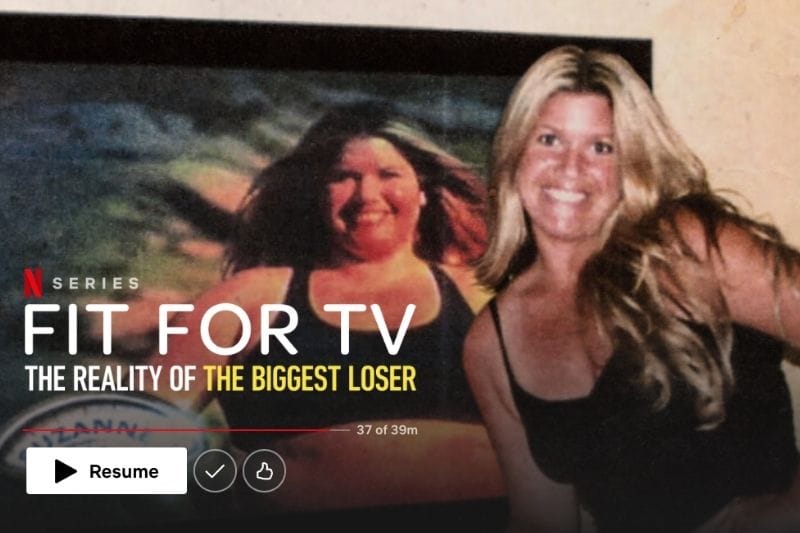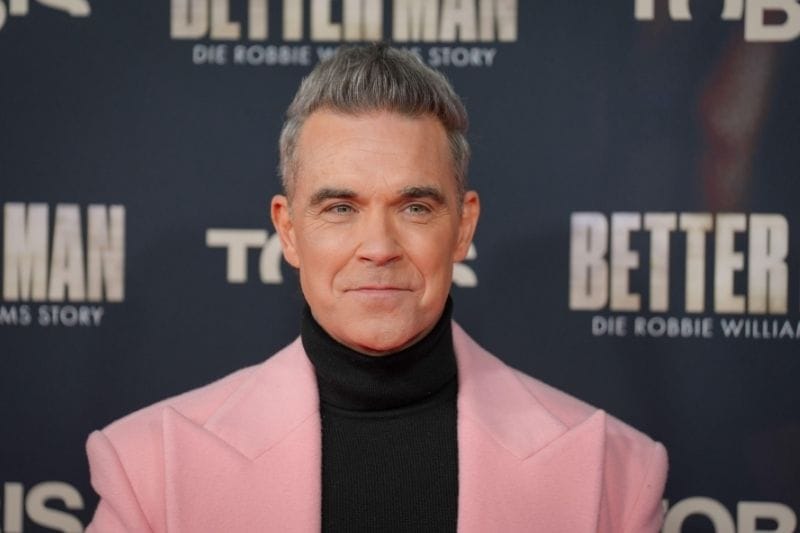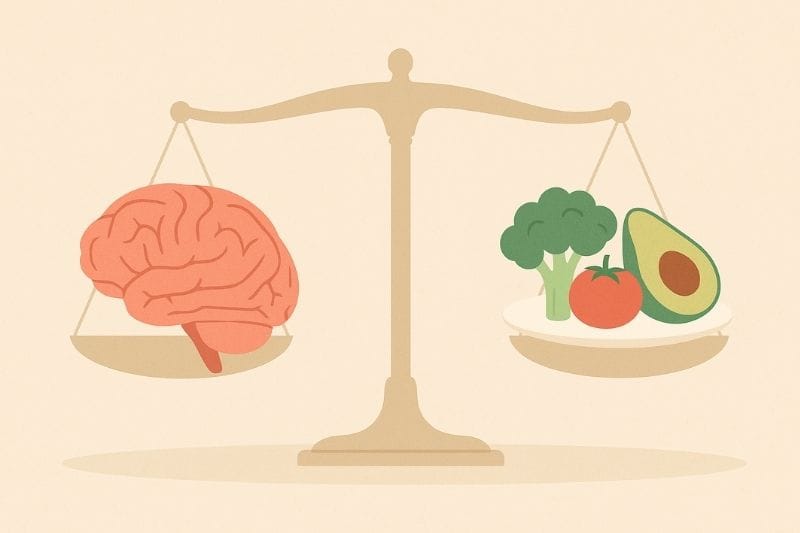The new Netflix documentary Fit for TV shines a spotlight on one of the most controversial weight loss shows ever made, The Biggest Loser. As a fitness and weight loss coach I was curious to watch because the programme had such a big cultural impact and has often been criticised for the way it treated contestants. It was fascinating to see behind the scenes and hear the stories of people who lived through it.
If I am honest, when The Biggest Loser was on television I thought it was brilliant and so did a lot of my family. We were completely engrossed in it. Looking back, that was probably because I did not really know any better at the time. The new documentary did not tell me much that I did not now already know. However, with my background now in fitness coaching and online weight loss coaching, and my better understanding of how it all works, I felt it was worth writing about. The show and its impact are still very relevant today.
The Biggest Loser was never just about losing weight. It was about competition, drama and big money prizes. But what made great television often came at a cost to the contestants. The new documentary shows both the highs and the lows.
What was good about The Biggest Loser
It would be wrong to say the show had no positives. It brought weight loss and health into the mainstream conversation. Contestants were given structure, coaching, regular training and a team environment that many had never experienced before.
The show motivated viewers at home. It proved that people could achieve significant change when given focus and accountability. Some contestants described it as a turning point in their lives and were grateful for the opportunity.
What was bad about The Biggest Loser
The format pushed people to extremes. Contestants were put through punishing workouts lasting hours every day and calorie intake was cut very low. Public weigh ins and eliminations created shame and stress rather than support.
As a television show it was gripping. As a method of healthy weight loss it was unrealistic. Most people cannot maintain hours of training and crash diets. It turned health into a contest rather than a sustainable lifestyle.
Trainers criticised for pushing exercise too soon
One of the biggest criticisms was that trainers pushed people into intense exercise before their bodies were ready. Contestants often arrived carrying a lot of weight and in poor physical condition, yet were immediately thrown into workouts that would challenge even experienced gym goers.
A major incident involved a Season 8 contestant, Tracey Yukich, who collapsed during the very first challenge, a one mile beach run. She developed rhabdomyolysis and nearly died. She spent weeks in hospital recovering and later described the ordeal as both traumatic and transformative.
There were other similar incidents. In an early season, two contestants were hospitalised after a first week running challenge. Medical advisors later said they had underestimated the risks and would not choose such extremes again. Over time, the show added safer, low impact options like pool workouts.
Who were the trainers on The Biggest Loser
The trainers became household names. In the US, Jillian Michaels and Bob Harper were renowned for their tough and often aggressive coaching styles. Other trainers included Dolvett Quince, Cara Castronuova and Anna Kournikova.
In the 2020 reboot, trainers included Steve Cook, a former bodybuilder and fitness model, and Erica Lugo, who had her own weight loss journey. Their approach appeared more supportive compared to earlier editions.
International versions also featured prominent trainers. In the UK, original trainers included Angie Dowds and Richard Callender, with Charlotte Ord and Rob Edmond arriving later. In Australia, Michelle Bridges and Shannan Ponton became widely recognised.
The long term impact on health and metabolism
A key issue is what happened to contestants afterward. Many regained weight and described feeling as if their metabolism had been damaged.
Metabolism is the process by which your body turns food into energy. The number of calories you burn each day is made up of your basal metabolic rate, which is the calories needed to keep you alive at rest, plus the energy used for movement, exercise and digesting food. This combined figure is often referred to as your maintenance calories. It is the amount of energy you can eat each day without gaining or losing weight.
When you lose weight, your maintenance calories naturally drop because a smaller body burns fewer calories. This happens to everyone. If you weigh less, it simply costs less energy to move and to keep your body alive.
On top of this, there is metabolic adaptation. This is the body’s survival response to dieting. When calorie intake drops, the body gradually becomes more efficient. You burn slightly fewer calories than expected for your new weight, and at the same time hormones that regulate hunger change. Ghrelin, which stimulates appetite, can rise, while leptin, which helps you feel full, can fall. That combination makes you hungrier while giving you fewer calories to work with.
This effect happens to most people who diet, but usually on a smaller scale.
In contrast, contestants on The Biggest Loser were put through extremely low calories combined with hours of daily exercise. This level of stress on the body triggered a much stronger adaptive response. Their maintenance calories plummeted far beyond what would normally be expected, and hunger hormones surged. That is why so many described feeling constantly hungry and exhausted, and why weight regain was so common once they left the show.
Metabolism is not permanently broken in either case, but the difference is in scale. A gradual, realistic approach allows the body to adapt more gently, making long term weight maintenance more achievable. The extreme methods used on The Biggest Loser pushed contestants into a corner where success was far harder to sustain.
Allegations of Shortcuts
Over the years there have been media stories where some past contestants alleged that drugs and supplements were sometimes used to speed up results. A few described feeling that diuretics or similar substances helped them drop weight before weigh-ins.
The producers have always denied promoting or supplying drugs, and no formal evidence has ever been confirmed. Still, the fact that such claims were made has shaped the public view of the show. For critics it added to the idea that weight loss was pursued at any cost, often in ways that would never be advised in normal circumstances.
Lack of Aftercare
Several former contestants have spoken about how hard life was once filming ended. During the show they were surrounded by trainers, doctors and nutritionists, even if the approach was extreme. But once the cameras stopped rolling, many described feeling left on their own.
People went from hours of daily training and carefully managed meals to the pressures of jobs, families and everyday routines. Without proper follow up or structured support, it was almost impossible to keep the same results. Some have said this sudden change contributed to weight regain and struggles with mental health. The show promoted itself as life changing, but many former participants now believe the lack of meaningful aftercare was one of the most damaging aspects.
Why it still matters today
The legacy of The Biggest Loser is stark. Quick fix diets and rapid transformations remain alluring. The lesson is that extreme methods are rarely sustainable.
Watching Fit for TV is a reminder that lasting weight loss comes from consistency, patience and balance. Real health is not about fast results or public weigh ins. It is about building everyday habits that last.
Reviews of the Netflix documentary Fit for TV
Reactions to the documentary have been strong. Here is a summary of what critics and viewers are saying:
- Viewers have described the programme as shocking and outrageous for how clearly it exposes the physical and emotional toll on contestants
- Some reviewers have called it a powerful and unsettling look at the darker side of reality television and the obsession with weight loss at any cost
- Others praised the documentary for giving a voice to contestants who had been ignored for years and showing the long term harm of extreme methods
- Several critics said the revelations about collapsed contestants, hidden medical risks and post show trauma were among the most disturbing parts
- At the same time, a few noted that some former contestants did manage to build careers in health and fitness, showing that not every outcome was negative
FAQs about The Biggest Loser
Where are Biggest Loser contestants now?
Most contestants returned to normal life. Some regained weight while others built careers in health and fitness.
Where are Biggest Loser winners now?
Outcomes vary. Some winners struggled with regain while others stayed active in the fitness world.
Who were the Biggest Loser trainers?
The American show featured Jillian Michaels, Bob Harper, Dolvett Quince, Cara Castronuova and Anna Kournikova. Later seasons included Steve Cook and Erica Lugo. In the UK trainers included Angie Dowds, Richard Callender, Charlotte Ord and Rob Edmond. In Australia the trainers included Michelle Bridges and Shannan Ponton.
How many Biggest Loser seasons were there?
The US version had 17 main seasons plus spin offs. Other countries also created their own, including the UK and Australia.
How can you watch Biggest Loser in the UK?
Streaming availability changes over time. The easiest way to explore the story now is to watch Fit for TV on Netflix.
What happened to The Biggest Loser show?
Ratings fell and criticism grew so the programme was cancelled. A short lived reboot aired in 2020 with a softer focus.
What was the Biggest Loser scandal?
Reports suggested the use of extreme calorie restriction, punishing exercise and unsafe methods to speed up weight loss. These added to criticism of the show.
When did The Biggest Loser end?
The original run ended in 2016. A reboot aired briefly in 2020 but did not continue.
Where was The Biggest Loser filmed?
Most of the US seasons were filmed at a ranch in California which became famous among fans.
What is the Biggest Loser challenge?
The challenge was simple but harsh. Contestants competed to lose the most weight each week, and those who lost the least were eliminated.
What happened to the health of contestants after the show?
Many reported regaining weight and feeling hungrier than before. Some managed to hold on to healthier routines, but most struggled.
Does The Biggest Loser damage your metabolism long term?
The show did not break metabolism forever but the extreme methods caused adaptation. Contestants ended up with lower maintenance calories than expected and stronger hunger signals, which made long term weight maintenance very difficult.
Would The Biggest Loser still air today now GLP-1 injections are available?
The landscape has changed with the rise of GLP-1 medications like semaglutide. A format that focused on extreme dieting and punishing exercise would likely face even stronger criticism today, although some networks might still attempt a modernised version.
Watching Fit for TV made me reflect on how much the conversation has moved. Extreme regimes may look dramatic on television but real, lasting results come from realistic approaches. If you want support to lose weight in a healthy, sustainable way I can help. My weight loss coaching is built around long term changes that fit into your everyday life, and you can also book a free consultation to explore what that could look like for you.




